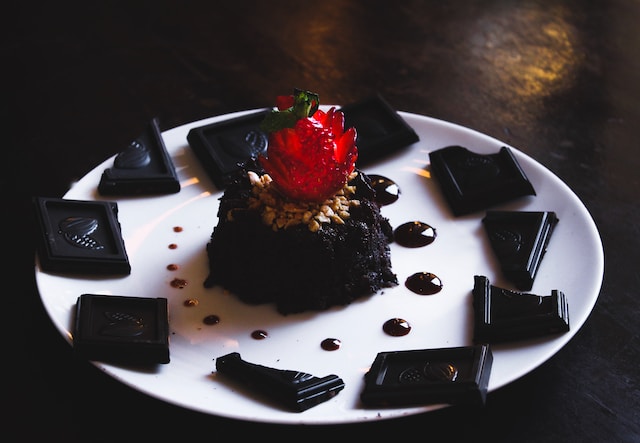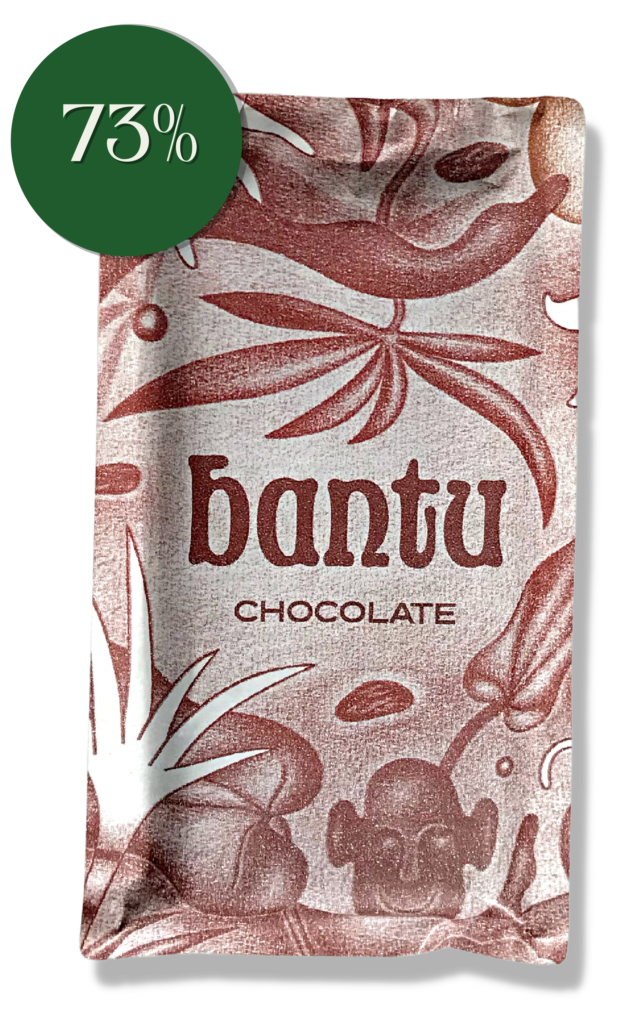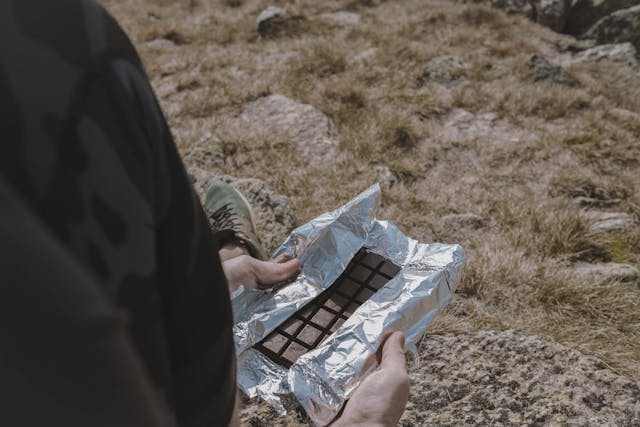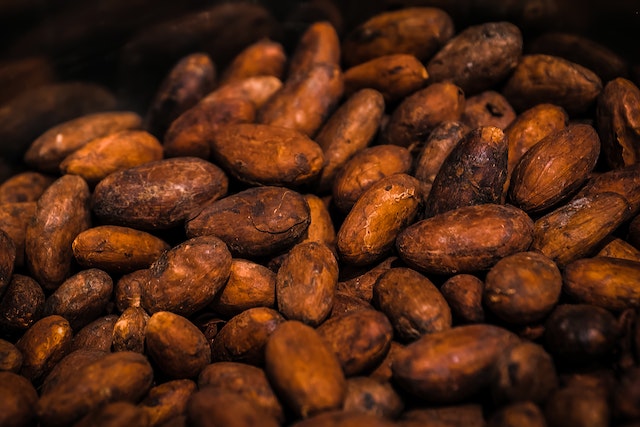
Cocoa Shortage and Rising Prices in 2024: What Consumers Should Know
July 21, 2024
A Complete Guide to Cocoa Solids: From Bean to Bar in Craft Chocolate
September 19, 2024Dark Chocolate
A Comprehensive Guide
Dark chocolate is growing in popularity, and for good reasons. It is the traditional form of ‘eating’ chocolate, it contains high cocoa content, and consequently more health benefits compared to milk chocolate and white chocolate.
The basic recipe for dark chocolate has only 3 ingredients: cocoa solids, cocoa butter, and sweetener such as cane sugar or natural alternatives like honey, maple syrup, coconut sugar, monk fruit, stevia or agave. So dark chocolate contains sugar but no milk.
This guide takes you through important details about dark chocolate, from its origin thousands of years ago to the modern varieties in our markets.
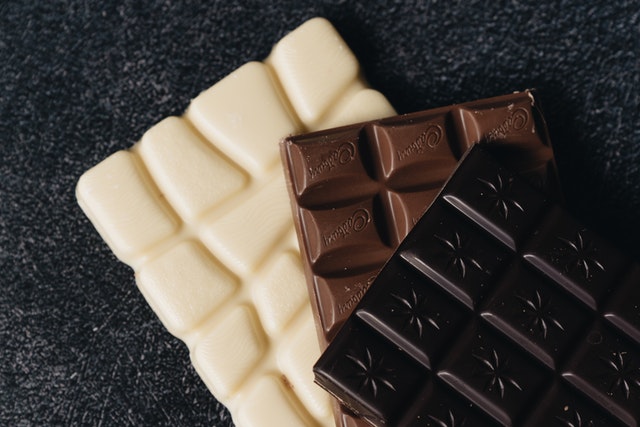
There are 3 types of traditional chocolates: white chocolate, milk chocolate, and dark chocolate.
Why is it Called Dark Chocolate?
When the Swiss chocolatier, Daniel Peter, created milk chocolate around 1875, it became necessary to distinguish the new form from the traditional bar. Came in the term dark chocolate. It is called dark chocolate to distinguish it from milk chocolate which is brown. Although dark chocolate is still brown, it is darker than milk chocolate.
However, the colour is not the only distinguishing factor. Dark chocolate should contain at least 50% cocoa (solids and fat), though you should note that the lower the percentage of cocoa, the higher the amount of other ingredients like sweeteners. Some products may contain oils and fats other than cocoa fat. For healthier dark chocolate, aim for 70% and above because the higher the percentage, the more the flavanols and the less the sweetener and other ingredients used.
A Brief Timeline (History) of Dark Chocolate
Most people know chocolate as solid bars or coatings on confections that melt on the tongue. But chocolate began as a drink thousands of years before the British chocolate company J.S. Fry & Sons created the first commercial chocolate bar in 1847. Even as a beverage, it was quite different from the modern chocolate drink, hot cocoa.
· The Ancient Mayan and Olmec beverage: Chocolate originated around 1500 BC in Mesoamerica as a drink they called kakawa or chocolatl. The Olmecs and Mayans ground seeds of the cacao tree on stones to brew a frothy bitter drink which they seasoned with vanilla and peppers. The Mayans especially enjoyed chocolate as ceremonial cacao, with spiritual significance during ceremonies like births, marriages, funerals, and to finalize important transactions. It was in this dark chocolate drinking form that the Spanish explorers met chocolate.
· In the 1520s, Spanish explorers exported the chocolate drink to Spain and from there, the revered drink, mostly only for the rich, spread to the rest of Europe with additions different from the Aztec recipe. The high demand for chocolate saw many chocolate brewing houses pop up. And inventions, too.
· The van Houtens (father and son): In 1828, dutchman Van Houten Sr. invented the cocoa press to separate cocoa butter from cocoa mass (ground cocoa in liquid form). This paved the way for the production of cocoa powder. Instead of chocolate drink being made from the whole seed, chocolate could now be easily made by mixing cocoa powder in hot water with other ingredients. For his part, van Houten Jr. discovered a way to treat cocoa mass with alkali to produce cocoa powder that was less bitter. This was called Dutch cocoa.
· J.S Fry & Sons: This British family business is credited with creating the first chocolate bar in 1847. Until then, chocolate was still consumed as a beverage. This invention made it possible to produce solid chocolate for the mass market, opening the way for variations in chocolate products beyond the traditional drinking form.
· Rudolf Lindt: The name rings a bell, right? In 1879, the founder of the Swiss brand Lindt invented the conching machine, a stirring device that evenly distributes cocoa butter within chocolate. The long stirring time (sometimes for days) develops the quality of chocolate by giving it a finer consistency and helping unpleasant aromas to evaporate.
· Daniel Peter: A Swiss chocolatier, he was the father of the milk chocolate bar. He was not the first to add milk to chocolate, though. The credit goes to Hans Sloane, but Han’s chocolate was still a beverage. Adding Henri Nestle’s powdered milk formula to chocolate, Daniel Peter created the first successful solid milk chocolate around 1875. Less bitter than dark chocolate, milk chocolate found favour among consumers and is now the most popular type of chocolate.
Much has gone into the making of chocolate as we know it today, from the frothy ancient drink to varieties of bars, tablets, and confections with recipes as varied as there are chocolate makers.
The innovation continues. Today, there’s emphasis on the quality of ingredients used to make chocolate. You may come across chocolate marketed as gourmet, premium or fine flavour chocolate.
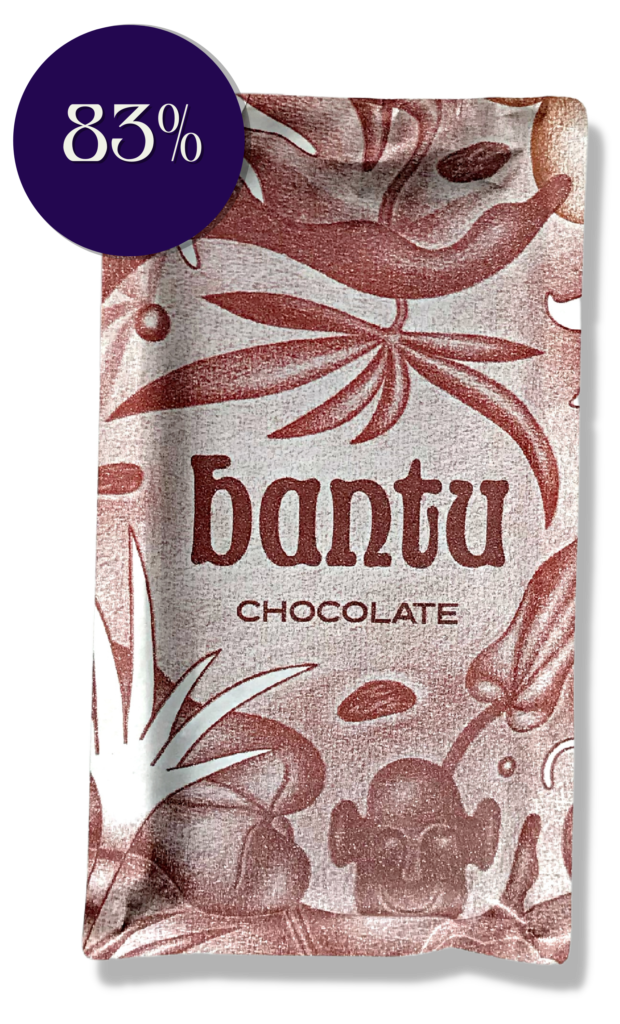
Voodoo 83% intensely dark chocolate bar with berry and toffee notes
Types of Dark Chocolate
There are two main types of dark chocolate: bittersweet and bitter dark chocolate. The names explain themselves. Bittersweet dark chocolate is more common. It has three main ingredients: cocoa solids, cocoa butter, and sweetener. Bittersweet dark chocolate comes in various percentages of cocoa content (solids + butter) ranging from 60%-85%. The remaining percentage is used up by sweetener.
At Bantu Chocolate we craft 3 single origin dark chocolate bars in London with cocoa beans from our farm in Cameroon.
The other type of dark chocolate known as bitter or unsweetened dark chocolate, does not have sweetener. It is therefore 100% chocolate (or 100% cacao). It might be the richest in flavanols, but some consumers do not find it as pleasant as its sweetened counterparts. You’d have to be sold on the pure taste of cacao to enjoy unsweetened chocolate.
READ ALSO: What is Ceremonial Cacao
Dark Chocolate Nutrition Facts
Dark chocolate comes in various sizes, shapes, and cocoa content.
100g of our single origin Noire 73% dark chocolate contains:
· Calories 565
· Fat 39.79g
· Carbohydrates 30.94g
· Sugars 27.22g
· Fiber 13.43g
· Protein 8.4g
Dark chocolate is also a source of many vitamins and minerals like magnesium, zinc, iron phosphorus, copper, and several B vitamins.
The best type of dark chocolate is one that has a high cacao content because it has more flavanols and less added sugar.
Noire 73% is our dark chocolate bar with honey notes made with single origin cocoa from Cameroon
Health Benefits of Dark Chocolate
Dark chocolate is not only nutritious but it’s also an excellent source of flavanols. Flavanols are chemicals found in plants like the cacao tree and have antioxidant and anti-inflammatory properties.
Eaten in moderation, dark chocolate is good for the heart and blood pressure. Dark chocolate may also improve brain function.
The flavanols in dark chocolate may protect the skin from sun damage, improve skin thickness and hydration, thereby reducing wrinkles and aging lines.
Some people believe dark chocolate is good for men, although the science behind it is not too convincing. Cacao may indirectly increase blood flow to the penis through the action of nitric oxide. But if nothing else, the good feeling from eating chocolate can make a man want to make love.
We wrote a comprehensive list of benefits of cacao powder (best source of flavanols) for various body systems.
READ ALSO: Cacao Powder Benefits for Male, Female, Body, Skin, and More
Health Benefits of Hot Chocolate
Dark Chocolate vs. Milk Chocolate
In terms of flavanols, dark chocolate is healthier than milk chocolate. Dark chocolate has more cocoa, and therefore more flavanols than milk chocolate. Dark chocolate also contains less added sugar than milk chocolate. On the flip side, milk chocolate doesn’t seem to have the heavy metals lead and cadmium that can be found in dark chocolate.
The best option between the two is to alternate them if you eat chocolate often.
Dark Chocolate vs. White Chocolate
While dark chocolate differs from milk chocolate mostly because of milk, the difference between dark chocolate and white chocolate is cocoa solids. Cocoa solids are part of the cocoa seed from which the butter has been pressed out.
Dark chocolate is healthier than white chocolate because white chocolate lacks cocoa solids. Cocoa solids keep 85% of the cocoa flavanols while cocoa butter only takes away 5%.
However, individual views of healthiness depend on what you’re seeking for or what you’re avoiding in chocolate. Cocoa solid intolerant? White chocolate would be healthier for you. Lactose intolerant? Choose dark chocolate.
LEARN MORE: Detailed Guide on White Chocolate.
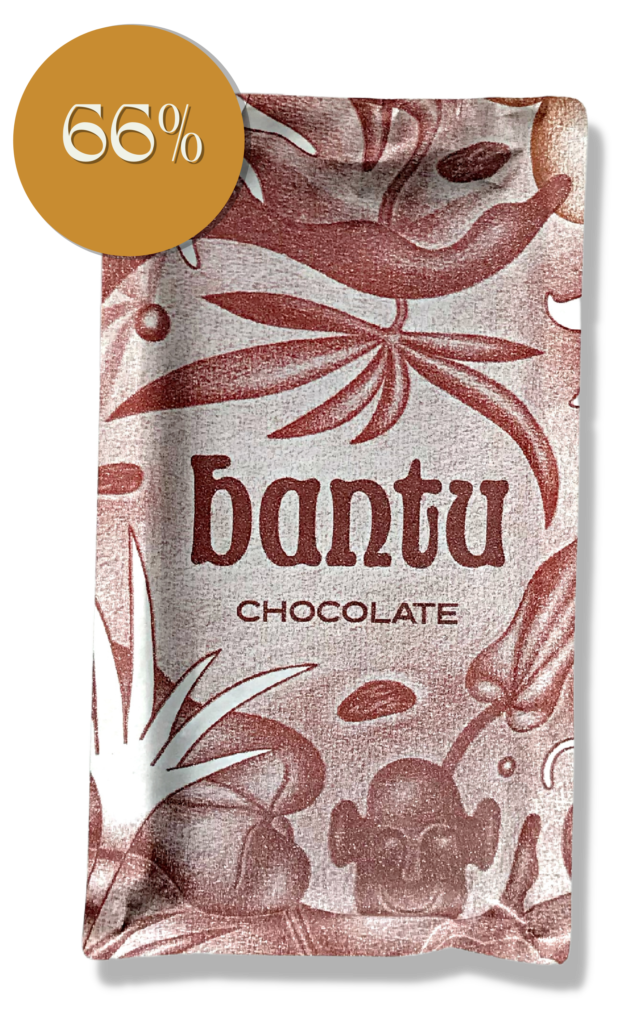
Makossa 66% dark chocolate is ideal for those who want the benefits of rich cacao minus the bitter notes of higher cacao content.
Dark Chocolate vs. Coffee: Caffeine Content
Dark chocolate is rich in caffeine. An ounce of 70-85% of bittersweet dark chocolate contains as much as 80mg of caffeine. Meanwhile, an 8-ounce cup of coffee contains about 95mg of caffeine. In most circumstances, you can replace your cup of coffee with melted chocolate drink or cacao powder.
For details, read this other article: Brewed Cacao vs. Coffee: 8 Reasons to Replace Coffee with Cacao.
Side Effects of Dark Chocolate
Lead and Cadmium are heavy metals commonly found in some dark chocolates than in milk chocolates. Consistent exposure to these heavy metals can lead to health problems. These health issues include developmental problems in foetuses and young children. For adults, you may experience nervous system problems, hypertension, immune system suppression, kidney damage, and reproductive issues.
What can you do to limit these in your dark chocolate consumption?
· The best option is to buy dark chocolates with safe levels of lead and cadmium. Currently, brands do not label the amounts of heavy metals in their products. Consumer Reports tested 28 bars for lead and cadmium, but the list is far from exhaustive.
· Consider a dark chocolate bar with low cocoa content. Unless you have the brand’s levels of heavy metals, choose a product with a lower content of cocoa. For example, 60% over 70%. Or 70% over 80%.
· See dark chocolate as a treat, not a daily meal. It may be tempting to limit serving size, but health is better than indulging your sweet tooth.
· Also note other sources of these heavy metals. They include sweet potatoes, spinach, and carrots. If you eat more of these, you may want to consider eating dark chocolate only occasionally. You may consider alternating with milk chocolate.
How to Eat Dark Chocolate
You can eat dark bars as they are, but you don’t have to, because there are many creative ways you can enjoy this nutritious treat.
Some chocolate lovers enjoy dark chocolate with their favourite red wine, a combo brimming with flavanols. The Chocolate Professor advises on how to pair chocolate with red wine, a mix of the content of a chocolate bar to the type of red wine.
You can also enjoy dark chocolate as a drink. Hot chocolate or hot cocoa is not only made with cocoa powder but you can shave a dark bar into a cup of hot water for a refreshing drink, especially on a wintry morning. For women, this can be a comfort drink during your period.
Dark chocolate pairs well with many foods and recipes. You can use dark chocolate on toast, on banana, in tea and coffee, or caramel. Dark chocolate also pairs well in brownies, cookies, cakes, puddings, and candy bars.
You can add sugar to dark chocolate if you find that a dark bar is not as sweet as you’d want. You may also add sugar when you melt dark chocolate to make a drink, a spread, or baking recipe. Just remember that too much sugar is unhealthy.
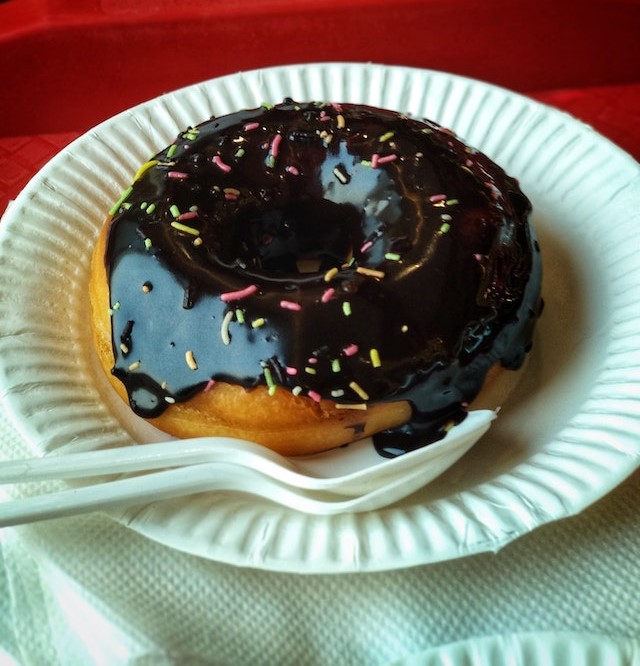
A donut topped with dark chocolate
How Much Dark Chocolate Can You Eat per Day
It is hard to prescribe how much dark chocolate you can safely eat in a day to reap more health benefits. Dark chocolate comes in varying percentages of cacao content. The lower the cacao content, the fewer the flavanols and the higher the added sugar or other sweetener. The higher the cacao content, the more fat the chocolate has.
Medical News Today cites studies that used 20-30g of dark chocolate per day, and advises consumers to choose higher cacao dark chocolate as from 70% cacao solids.
When to Eat Dark Chocolate
The right time to eat or drink dark chocolate is in the morning or during the day. Unless you want a wakeful night. Dark chocolate is rich in caffeine (as much as 80mg in 100g of a 70-85% bar). Depending on how much you take, eating dark chocolate before bed may keep you from falling asleep. So no, dark chocolate is not good for sleep. You may want to try chamomile tea, peppermint tea, ashwagandha tea, or some other drinks that can help you sleep.
Dark Chocolate and Weight Gain
You will gain weight if you eat chocolate every day PLUS other sugar-rich foods in total amounts that EXCEED your total daily energy expenditure. The emphasis on other foods you eat and how many calories you consume is because weight gain (or weight loss and maintenance) is not all about what individual food you can eat daily.
If you’re concerned about your waistline, track everything you eat. Check out our article on How to Eat Chocolate without Gaining Weight to see how to incorporate chocolate into your diet.
Why Dark Chocolate is More Expensive
Dark chocolate is more expensive than milk chocolate because of the high cocoa content in dark chocolate.
What To Look for When Buying Dark Chocolate
Which dark chocolate is healthiest? The answer is not straightforward. In terms of flavanols, the higher the cocoa content, the healthier the chocolate. This means, for example, that 70% dark chocolate has more flavanols than 60%. However, you must also consider the possibility of heavy metals in dark chocolate. If dark chocolate is a treat for you, that is, you don’t eat it every day, a better choice of dark chocolate would be from 70% and above. More flavanols and less added sugar. If you eat dark chocolate more often, you may want to consider one with less cocoa content like our bar Makossa 66% dark chocolate.
CHECK OUT ALL OUR SINGLE ORIGIN DARK BARS
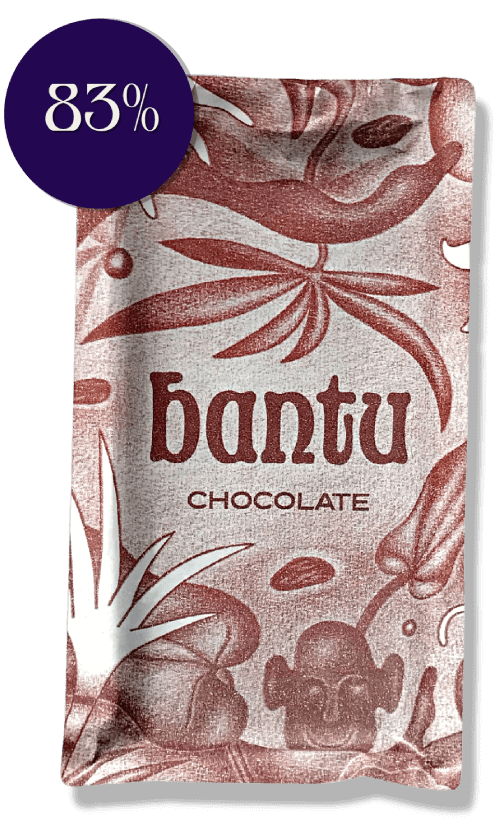
Intensely dark chocolate bar rich in flavanols
References
https://www.cocoterra.com/6-sugar-alternatives-for-chocolate/
https://hraf.yale.edu/the-mesoamerican-origins-of-chocolate-featuring-ehraf-archaeology/
http://www.historyofchocolate.net/chocolate-history/chocolate-in-spain/
https://www.zotterusa.com/what-to-pair-with-dark-chocolate/
https://www.persistencemarketresearch.com/market-research/dark-chocolate-market.asp
https://www.imarcgroup.com/dark-chocolate-market
https://www.webmd.com/diet/health-benefits-dark-chocolate
https://www.consumerreports.org/health/food-safety/lead-and-cadmium-in-dark-chocolate-a8480295550/
Chocolate Extinction: Fact vs. Fiction + What Chocolate Lovers Can Do
Chocolate ExtinctionFact vs. Fiction, What Consumers Can Do Share On Facebook Twitter Email Is the world really running out of chocolate? Not really. Currently the global […]
Corporate Chocolate Gifting Ideas to Appreciate Employees and Delight Clients
Corporate Chocolate GiftingHow to Appreciate Employees & Delight Clients Share On Facebook Twitter Email When it comes to corporate gifting, a one-gift-fits-all approach just doesn't cut […]
Cacao Supper Club at Home: Guide to Tasting Chocolate, Cacao Tea, and Pulp Juice
Cacao Supper Club at HomeGuide to Tasting Chocolate, Cacao Tea, and Pulp Juice Share On Facebook Twitter Email Imagine gathering around the table with a few […]
